Tanks "Panther" in 1945 year
The first conceptual designs of such a tower were presented by Rheinmetall in March 1944. This design was referred to as "Tiggp - Panther (schmale Blende)" - "Panther Tower with a narrow mask." This project took into account new weapons requirements tankput forward by the arms control of the ground forces. So, on the roof of the tower, a special armored protrusion was provided for installing the rangefinder, and instead of the telescopic at this stage, the possibility of using a periscopic gun sight was considered. The thickness of the turret’s armor was: frontal sheet -120 mm at an angle of 12 degrees, side and aft -60 mm at an angle of 25 degrees, roof - 40 mm at an angle of 17 and 7 degrees. Most of the elements of internal equipment and weapons remained the same as on the Ausf Panther. G.
Tank "Panther" Ausf. G, left by the crew due to breakage or lack of wet. Hungary, 3-th Ukrainian Front, February 1945 of the year. In 1945, the tanks of this modification were to replace Ausf in the production of the Panther. F with the so-called "narrow" tower (ASKM)
In the spring of 1944, the further development of the new tower design was transferred from Rheinmetall to Daimler-Benz. At the same time, the Tank Armament Test Department (WaPruf 6) issued the “Daimler” tactical and technical requirements for designing a “narrow” turret (Schmalturm - “Schmalturm”), the main of which were as follows:
“Elimination of the possibility of ricocheting the shells from the gun mask down into the roof of the hull;
Increase armor protection without a corresponding increase in the mass of the tower;
Reduction of the frontal projection without reducing the internal space of the tower, necessary for the maintenance of the gun;
Installation of a range finder; Replacing the coaxial MG 34 machine gun to MG42;
Reducing the cost of manufacturing the tower;
Installation of the necessary equipment, which, if necessary, could be quickly converted by the crew, either into a command vehicle (Befehls-Panther) or into a machine with infrared devices; capable of leading a night fight.
Taking into account these technical requirements, Daimler-Benz developed its own project of a “narrow” turret, the design of which (not counting the cost of weapons and optics), allowed to reduce the cost of its production by 30-40%. At the same time, despite a significant increase in the thickness of the reservation, its estimated mass (7,565 tons) was even slightly less than the serial one on the Ausf tank. G (7,665 tons). It was possible to significantly reduce the area exposed to frontal fire while maintaining the internal working volume. The diameter of the shoulder strap in the light remained the same as that of the serial "panthers" - 1650 mm.
After the development of the "narrow" tower, designed for installation on the chassis "Panther" Ausf. G, which almost did not change, a new designation of the tank - Ausf. F.
The first experimental models of the “narrow” towers were made in the summer of 1944, and in August one of them was installed on the Panther chassis Ausf.G.
Tank "Panther" Ausf. G, lined with troops of the 3 of the Ukrainian Front. Hungary, March 1945 of the year. Onboard screens are absent, as well as the car shown in the previous photo (photo from V. Churov’s archive)
The new tower had a much narrower (compared to the serial) frontal armor list of the tower (approximately 950 mm above and 1500 mm below), which made it possible to reduce the area subjected to fire. By reducing the size it became possible to increase the thickness of the reservation.
The turret was fitted with an upgraded 75-mm gun, KwK.44 / 1 L / 71, developed by the Czech company Skodawerke. In the new gun, the recoil brake and nakatnik “moved” under the barrel (on the KwK 42 they were located to the right and left of the barrel). The gun received a new type of mask, similar to the “Royal Tiger” mask, as well as a cradle of a modified design. The air compressor for purging the bore after the shot was replaced by an air pump, which surrounded the knurler as an additional cylinder. The KwK 44 / 1 gun did not have a muzzle brake, although it was present on the first few samples of these guns. As a result, the recoil force increased from 12 to 18 tons.
The rotation of the tower was carried out by a hydraulic drive, which in turn, was driven from the shaft coming from the engine to the transmission. For precise aiming at the target and a slow turn of the turret, the control used earlier on the “panthers” with the help of legs was replaced with manual control. The maximum speed with which the tower could rotate hydraulically was 360 degrees in 30 seconds.
There was also a duplicate manual turning mechanism - one turn of the flywheel corresponded to a turn of 0,405 degrees. When using it, it was possible to rotate the tower 360 degrees in 4 minutes. If the tank tilted to one side, the loader could work with an additional turn flywheel and thereby help the gunner to turn the turret. In general, the Schmalturm tower turning mechanism turned out to be cheaper, had a smaller mass and size than that used on the “panthers” before. This was mainly due to the rejection of the two differentials and the multi-disc safety clutch, which stood in the towers of previous modifications of the tank.
The first version of the "narrow" tower with a 75-mm gun (the gun is equipped with a muzzle brake), mounted on the Ausf Panther chassis. G. August 1944 of the year
Also replaced the mechanism of vertical guidance, which also became more compact and cheaper. He provided the gun with a rise of 20 and a decrease of 4 degrees.
The commander's cupola was also modernized - it was made lower and, accordingly, it represented a smaller target. Like the previous one on Ausf. G turret case was molded, there were seven nests for the installation of periscopes. A special ring was mounted inside the turret, on which it was possible to fix a stereo tube, a turret of an anti-aircraft machine gun or an infrared night vision device. At the bottom of the turret was provided azimuth pointer.
Instead of the MG 34 machine gun, the MG 42 was now installed - this was due to the fact that the MG 34 tank version was no longer produced. To install the MG 42 had to develop a completely new bracket mounted on the cradle of the gun. There were two bags under it: one for feeding with cartridges, the other for collecting spent cartridges.
Originally it was planned to install a monocular articulated telescopic sight TZF13, developed by Leitz, in a “narrow” turret. He had a variable magnification - 2,5 and 6 multiple. In the first case, the field of view was 28, in the second - 12 degrees. However, Leitz manufactured only two samples of the TZF13 sight: one in October 1944, and the other in January 1945. This was due to the fact that in the fall of 1944 of the year, it was decided to install the SZF1 periscope sight with a stabilized field of view in the Schmalturm turrets. The periscope head protruded from the hole in the roof of the tower and was protected by a special armor cap. Leitz was supposed to make an experimental series of 10 SZF1 sights, but managed to assemble only 9 pieces: five from September to December 1944, and four upgraded 1945 in January and February. In January 1945, the order was issued for the first batch of 1000 SZF1, but they were not started.
According to the original project, the loader of the “narrow” tower received a periscope mounted in the roof. However, already in the course of serial production, it was abandoned, and the hole intended for its installation was closed with an armored cap.
As mentioned above, the installation of a range finder was provided for in the Schmalturm tower. For this purpose, a sample was chosen with the base 1,32 m, 15-fold magnification and field of view 4 degrees, designed by Zeiss. The final development of the sample was planned for April, and the beginning of mass production - for July 1945. However, until the end of the war, Zeiss was unable to produce a single range finder sample.
Another interesting solution in the manufacture of the “narrow” tower was the fact that the rear escape hatch cover was made of waste produced by cutting a hole for the hatch in the rear bro-neist. This measure allowed in some measure to save armor.
In the autumn of 1944, changes were approved (besides the introduction of the “narrow” tower) that were supposed to be introduced into the design of the Panther Ausf. F (compared to Ausf. G). Thus, the thickness of the roof of the hull increased from 16 to 25, the hatches of the driver and radio operator were introduced (the lid was raised slightly and opened to the side when the cover was opened), the driver’s periscope modernized and the course gun MG 34 was replaced by assault rifle StG 44 (“Sturmgever”) in ball mount.
The same tank as in the previous photo, left view. August 1944 of the year
The second version of the "narrow" tower with 75-mm gun, mounted on the chassis "Panther" Ausf. G. September 1944 of the year
One of the first production versions of the “narrow” turret with an 75-mm cannon installed in it. Please note that the tower is already camouflaged in color.
From radio equipment on naHTepe Ausf. F intended to be installed in the housing of the Fu 5 radio station. But if necessary, it was possible to easily install additional radio stations in the turret, as a result of which an ordinary tank turned into a commander tank. For this purpose, the installation of two additional antenna inputs was provided for all tanks.
On the serial samples "Panther" Ausf. F envisaged the use of track rollers with a metal band and internal depreciation, which had been developed since the 1943 of the year. 20 February 1945, the department of testing of tank weapons reported that the installation of such rollers is expected to begin in May 1945, including on the Ausf modification tanks. G. In addition, the “Panthers” Ausf. F was supposed to equip the new engine Maybach HL 234, which was already mentioned above.
February 20 of the year at a meeting of the “Commission for the Development of Tanks” approved the dates for the introduction of a series of various components and assemblies to improve the design of the Panther tank: a sight with a stabilized field of view, the installation of a rangefinder in a narrow tower - April 1945, the introduction of reference Rollers with steel band and internal cushioning - May 1945 of the year, new Maybach HL 1945 engine - August 234 of the year.
The initial release schedule for the Panther Ausf. F (with a “narrow” tower) Reichsmini weapons adopted 26 October 1944. At the same time it was planned to connect two more firms to the manufacture of these tanks (see table). According to the schedule, the first production machines modification Ausf. F had to leave the factory floor in March 1945.
However, already 30 January 1945, the year of the program made some adjustments. Now Krupp-Gruson was supposed to turn in its first Panthers in June, and Nibelungenwerk in August 1945. At the same time, by June 1945 of the year, a complete transition to the installation of “narrow” towers was envisaged on all manufactured panthers, including on the Ausf modification machines. G.
However, not a single "Panther" Ausf. F to make and failed. In September, 1945 of the year, during the interrogation by MAN of the company representatives by the Americans, the latter reported that their company did not collect any Ausf Panthers. F.
General view of the so-called "narrow" tower ("Schmalturm"), designed and manufactured for installation on the tank "Panther" Ausf. F. Armament not yet installed
As for Daimler-Benz, it should switch to the release of the Ausf modification. F since 2229-th serial tank. And at the time 24 stopped production on April 1945, the company manufactured 1929 machines (250 Ausf. D, 675 Ausf. A and 1004 Ausf. G) —as roughly on 300 Ausf machines. G less than planned. Thus, before the release of "Panther" Ausf. Rdelo did not come here.
However, before the advent of "Panther" Ausf. F "in the metal" had quite a bit of time. Several samples of the “narrow” tower were made, and at the Ruhrstahl factory, captured by the Allies in April 1945, there were at least four Ausf Panther buildings on the assembly line. F. Several “narrow” towers after the war were taken to the UK for testing.
"Panther" with 88-mm gun
In the autumn of 1944, Krupp offered the option of installing an 88-mm KwK 43 L / 71 cannon (the same as on the King Tiger tank) in a narrow tower designed for the Panther Ausf. F. A drawing of such an installation, dated October 18 1944, was submitted to the test section of the tank armament for review. Representatives of Krupp, who were present at the same time, explained that the main principle of their design was to install 88-mm guns in a “narrow” tower with minimal modifications to the latter. 4 December 1944 between the company and the military signed an agreement for the detailed design of the tower with such weapons for the tank "Panther" Ausf. F.
The arrows show the differences in the hulls of the Panther tanks Ausf. G (above) and Ausf. F (bottom): composite roof, modified fastenings for the hatches of the driver and the radio operator, modified cutting "thorn" at the junction of the front and side sheets
At the same time, Krupp signed a contract for the development of Schmalturm with an 88-mm tool and Diamler-Benz. Having some experience in creating “narrow” towers, the latter presented its project earlier than Krupp.
At a meeting of the “Commission for the Development of Tanks”, held on 23 in January 1945, Colonel Holzhauer (Head of Tank Armaments Testing) reported that Diamler-Benz presented its version of the turret, which had an increased diameter of 100 mm it was installed vertically to increase the internal volume. According to calculations, the mass of the tank with such weapons (compared with the version with the 75-mm gun) increased by about a ton.
Krupp designers had a number of technical problems associated with the installation of an 88-mm art system in a “narrow” tower, as a result of which their design was ready later than the “daimler design”. Thus, in their letter to the 12 February 1945 testing department for tank weapons, they reported that the 88-mm KwK 43 cannon can be installed in Schmalturm only if the gun axles are displaced forward 350 mm. Given the fact that the size of the turret under the 88-mm cannon remained the same as for the 75-mm guns, Krupp engineers asked the military to clarify a few points needed to continue the work.
First, it was unclear whether the internal volume of the turret would be sufficient for the loader to work (the dimensions of the 88-mm shots of the KwK 43 cannon were significantly larger than the X-NUMX-mm “Panther”). To clarify this point, representatives of the company offered to make a wooden model of the tower with an 75-tool and check everything in practice.
Something like this could look like "Panther" Ausf. F when organizing its mass production (a variant with steel support rollers with internal damping and an infrared device on the commander’s tower is shown)
Secondly, the engineers at Krupp did not know whether the form of the mask reservation would suit the military.
Thirdly, the calculations showed that the installation of 88-mm guns will lead to a mixture of the center of gravity of the tower and an increase in its mass by about 900 kg. To continue the design required the consent of the customer (the military) to such changes.
20 February 1945 of the Year “Tank Commission” reviewed the projects of the “narrow” tower with the 88-mm KwK 43 gun, presented by Krupp and Diamler-Benz. Moreover, by this time, the latter, in addition to sketching drawings and calculations, produced a full-scale wooden mockup of the tower.
During the discussion, each project has its own advantages and disadvantages. As a result, representatives of the department of tests of tank weapons and control of armaments of the ground forces offered a compromise. The design of the tower itself was entrusted to the firm and Diamler-Benz, the proposed option with a wide shoulder strap, but with a sloping back wall, as in a “narrow” tower with an 75-mm gun, was taken for the basis. Krupp received a revision of the 88-mm KwK 43 guns for mounting in the Daimler tower, as well as the design of the installation itself and the reservation of the gun mask.
A few days later, on February 27 of the year, a test was held in the test section of tank weapons with representatives of both firms on the development of a “narrow” turret with an 1945-mm gun for the Panther tank Ausf. F. As a result of the discussion, the following requirements were developed.
- The angle of elevation of the instrument should have been 15, and the angle of descent 8 degrees.
- It was supposed to use the 88-mm KwK 43 L / 71 X gun from the Royal Tiger tank as weapons already well mastered in production. In this case, the gun was subjected to alteration - the recoil brake and knurler, in the "basic" version, were placed on top of the barrel, now installed on the bottom. In addition, the gun was deprived of the muzzle brake, which required the reinforcement of recoil devices, and the trunnions of the gun were moved forward, as suggested by Krupp engineers.
- In the front sheet of the turret there had to be only holes for the installation of the gun and the machine gun. Instead of a telescopic one, it was supposed to use a SZF 2 or SZF 3 periscope sight. while the sight was supposed to have a stable field of view.
- As in the version of the "narrow" tower for 75-mm guns, for the 88-mm gun provided for the installation of a periscope. It was supposed to study the possibility of using for this purpose already existing in the production of samples with base 1,32 or 1,65, see.
- The diameter of the weather in the light of the tower was supposed to increase by 100 mm (up to 1750 mm) to facilitate the work of the loader and the entire crew as a whole.
- The ammunition should have been unitary 56 shots. The latter were supposed to be placed on the newly designed shelves inside the case. In addition, several shots were supposed to fit in the tower.
- The overall design of the tower was supposed to be almost the same as that of the Schmalturm designed for the 75-mm gun. The commander's turret was also used with this project.
Assembly line hulls tank "Panther" at the factory of Ruhrstahl, captured by the Allied forces. Spring 1945 of the year. At least four enclosures for Ausf vehicles are visible. F. The arrows show the visible differences from the Ausf Panther cases. G
8 March 1945 Colonel Kron, a representative of the department for testing the tank armament of the Army Armaments Directorate, asked Krupp to submit a final design of the gun mask reservation to 12 in March. 14 March 1945, the design prospects of the Panther with an 88-mm gun and further possible options for developing the design of this tank were discussed in the presence of the Inspector General of the tank forces G. Guderian. Representatives of the firms Daimler-Benz and Krupp reported on the progress of work on this machine as follows.
So, in part of the ammunition, it was possible to place 15 shots to the cannon in the turret, and 50-54 was also supposed to be placed in the tank hull. Thus, portable ammunition was obtained more than the original requirements. According to the engineers of both companies, the total weight of the new tank exceeded that of the Panther Ausf. F with a 75-mm tool for just one ton.
Representatives of the Army Armaments Directorate stated that the manufacture of the first tank model with an 88-mm gun in the non-armored steel turret was planned for the beginning of June 1945. In the case of successful tests of the machine, it was supposed not only to switch to the serial production of this version of the Panther, but also to equip all tanks of this type with such a tower in the future. According to the officers of the department for testing tank armaments, with the necessary assistance from equipment, materials and personnel, the serial production of “panthers” with “narrow” turrets and 88-mm guns could have been launched in the fourth quarter of the year.
Perhaps that was how the Ausf Panther could look. F with 88-mm cannon in a “narrow” turret. However, how such a machine could actually look like,
Projects tank "Panther" Ausf. Fc 88-mm gun, developed by Krupp (above) and Daimler-Benz (below)
23 March 1945 of the year Reich Minister A. Speer conveyed to the Inspector General of the tank forces and representatives of Daimler-Benz and Krupp companies Hitler’s wish for the early production of a Panther prototype with an 88-mm cannon and display of a prototype from regular (not armored) steel in the middle of April. But, naturally, there could be no talk of any prototypes - the Third Reich lived its last weeks. Moreover, until the end of the war, the design of the “narrow” tower with the 88-mm tool was not even completed. The engineers of Daimler-Benz, questioned after the war by the allies, confirmed this, saying that the project was far from complete, and they hadn’t started the production of a prototype from metal. The only thing that was available at the Daimler-Benz plant (in addition to the drawings) was the wooden mock-up of the tower, submitted for review as early as February 1945 of the year. Thus, before the completion of the design and manufacture of the prototype "Panther" with the 88-mm tool was still far away.
As for the Jagdpan-tera tank destroyer, the author does not have any information about the possible modernization of the vehicle. The document “Review of the state of armament on tanks, assault, self-propelled guns and tractors up to August 1945 of the year”, which was already mentioned, provided for 1 March to August inclusive to make 410 self-propelled guns, of which 60 in March, to 80 in April, May, June and July , and 30 in August. Reliably, one can only say what could have been expected on the “jagdpana-trache” installation of a new engine, for example, the Maybach HL 234, as well as road wheels with a metal bandage and internal damping.
- Maxim Kolomiets, "Hitler's last tanks"
- German tank industry to 1945 year
Infrared devices for German tanks
Modernization of the "Royal Tiger", 1945 year
Tanks "Panther" in 1945 year
"Waffentragers"
Jagdpanzer 38D tank destroyer
German anti-aircraft tanks
Small tank destroyers of Germany
E series tanks
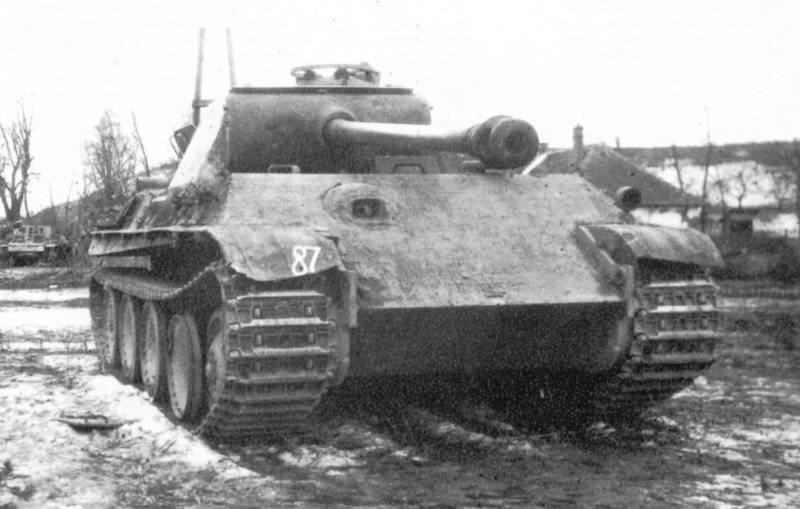
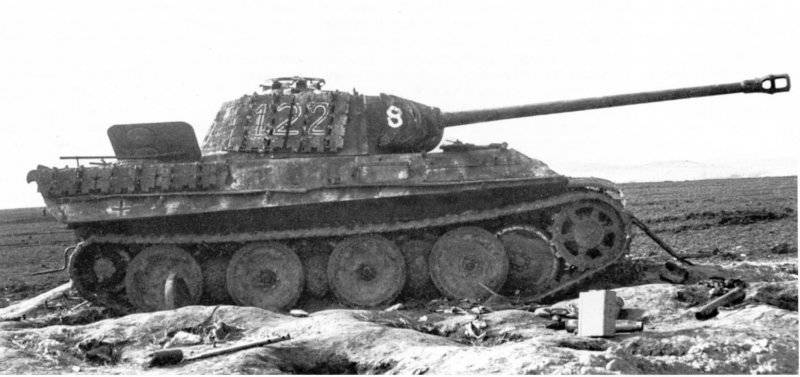
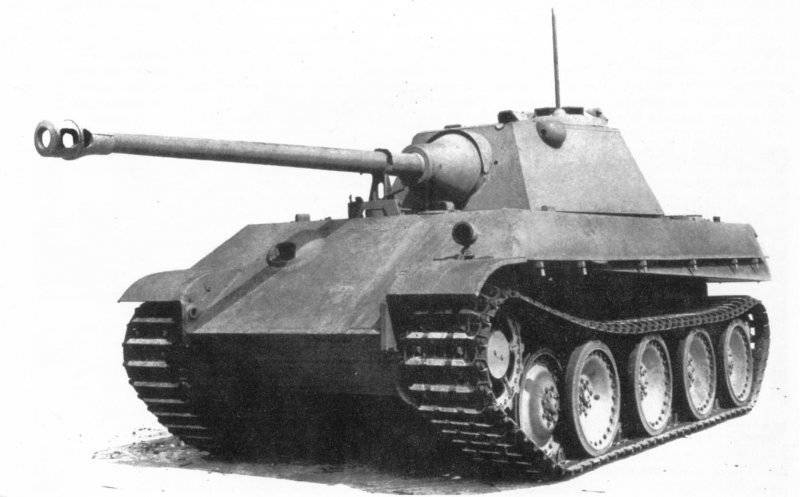
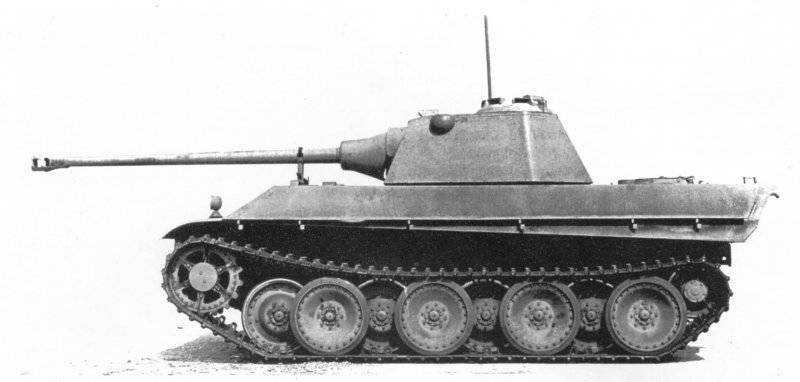
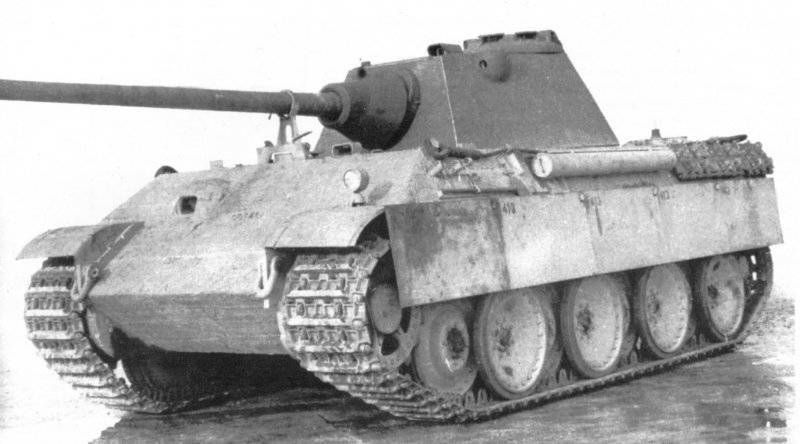
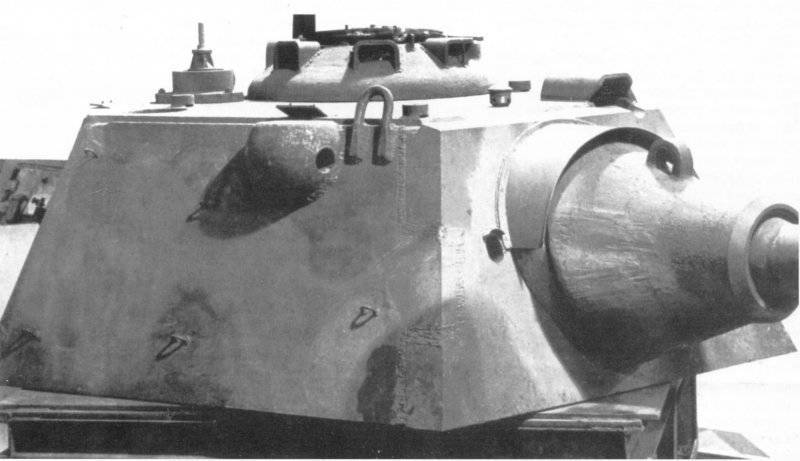
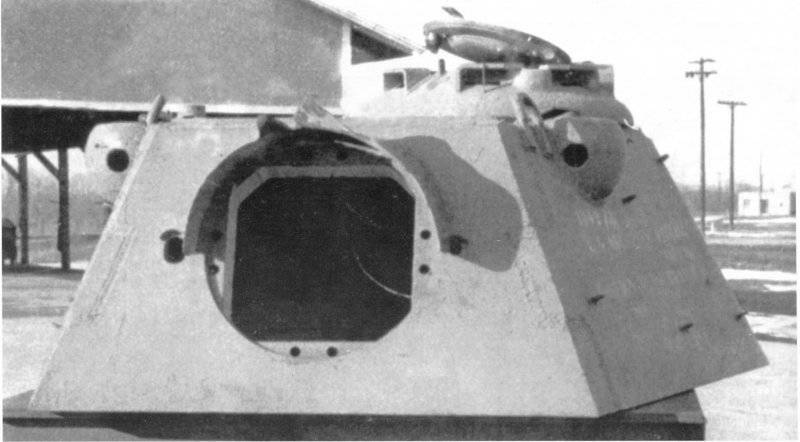
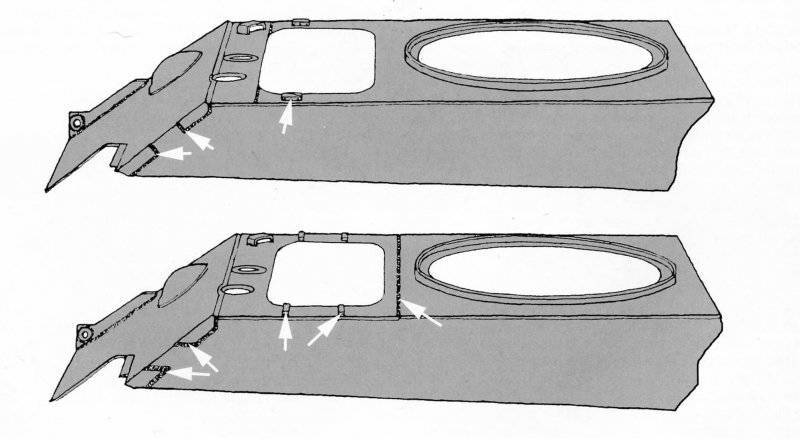
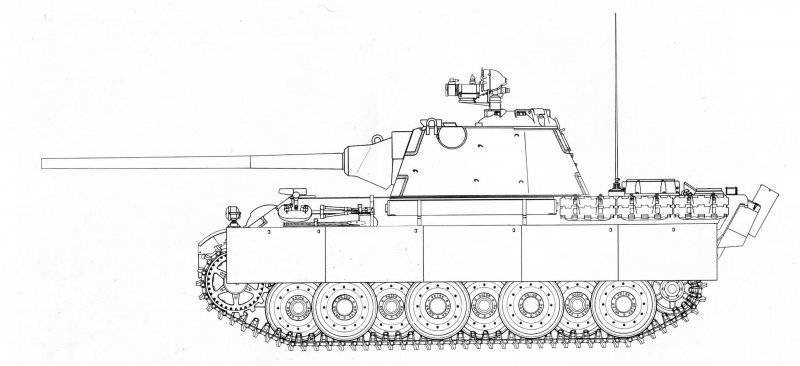
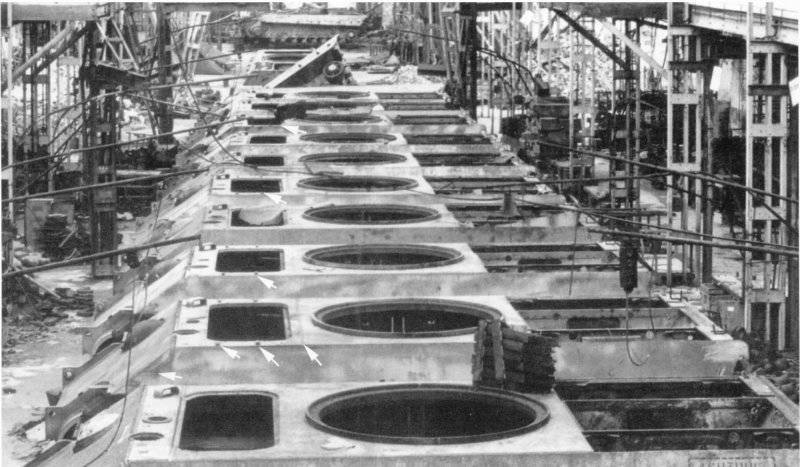
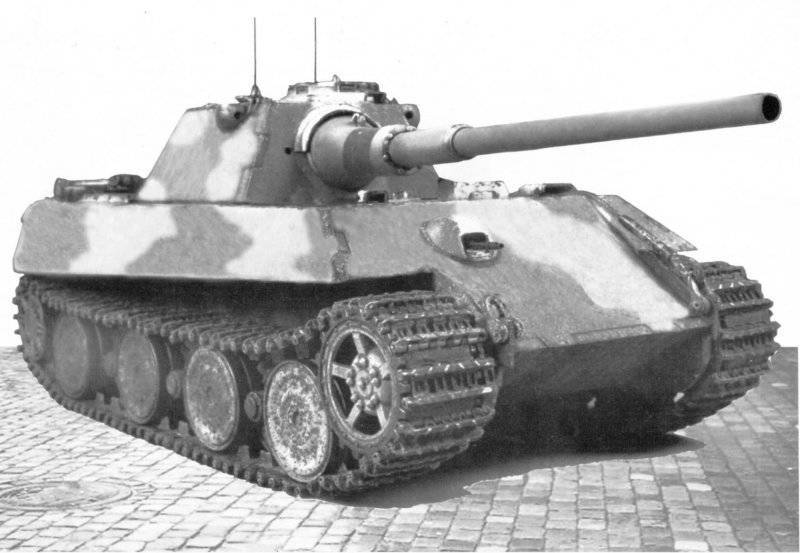
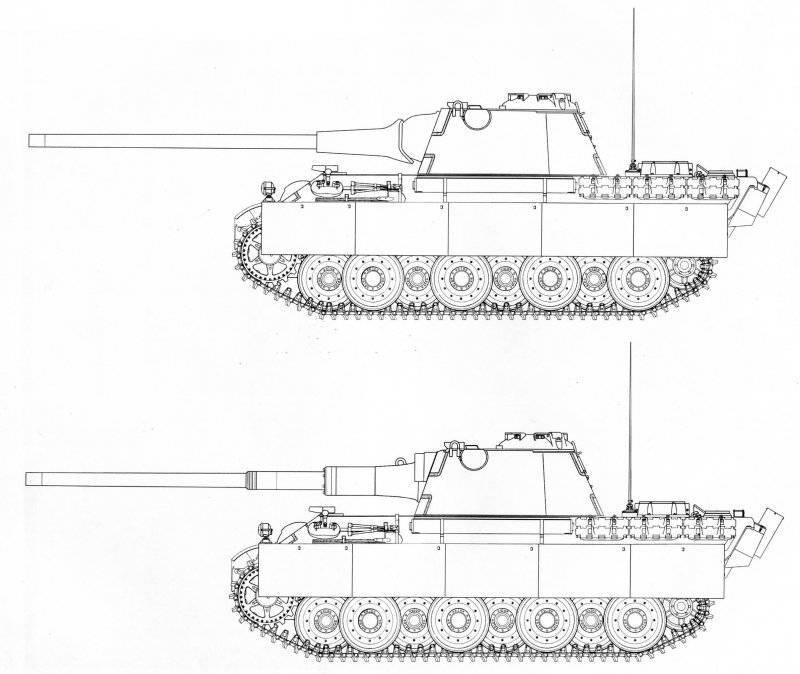
Information